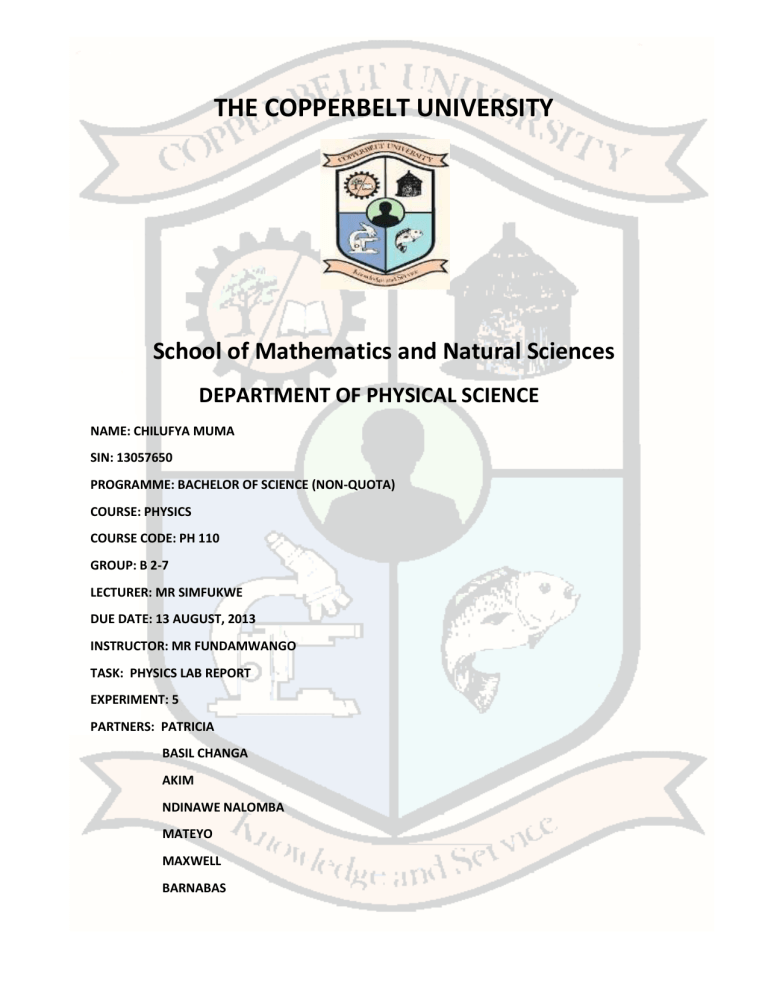EXPERIMENT 5
advertisement

THE COPPERBELT UNIVERSITY School of Mathematics and Natural Sciences DEPARTMENT OF PHYSICAL SCIENCE NAME: CHILUFYA MUMA SIN: 13057650 PROGRAMME: BACHELOR OF SCIENCE (NON-QUOTA) COURSE: PHYSICS COURSE CODE: PH 110 GROUP: B 2-7 LECTURER: MR SIMFUKWE DUE DATE: 13 AUGUST, 2013 INSTRUCTOR: MR FUNDAMWANGO TASK: PHYSICS LAB REPORT EXPERIMENT: 5 PARTNERS: PATRICIA BASIL CHANGA AKIM NDINAWE NALOMBA MATEYO MAXWELL BARNABAS EXPERIMENT 5: COEFFICIENTS OF FRICTION AIM: To determine the coefficient of static and kinetic friction between two wooden blocks. APPARATUS: A horizontal plane, a frictionless pulley fixed at one end, a wooden block with a hook, weight box, scale pan and string. THEORY: The force of resistance encountered when one tries to slide one surface over the other is known as friction. This force of resistance is tangential to the surface in contact. Friction is directly proportional to the normal force. The constant of proportionality is called the coefficient of friction. Frictional force is equal to; f = µsFN (1) In the above equation, µs is the coefficient of friction and FN is the normal force. When the surfaces in contact are sliding over each other and are in motion, the force of friction is; f = µKFN (2) In the above equation, µK is the coefficient of kinetic friction. FN Wooden Block W Scale pan Figure 1 Horizontal plane PART 1: Static Friction PROCEDURE: 1. The scale and wooden block were weighed separately. 2. The scale pan and wooded block were tied with the sting that was given. 3. The wooden block was placed on the horizontal block and the point was marked with chalk and the string was allowed to pass over the frictionless pulley so that the scale pan was on the over side below the pulley. 4. Weights were added on the scale pan till the wooden block begun to slide and the weights were noted. 5. The experiment was repeated by adding weights of 50g, 100g, 150g, 200g on top of the wooden block, each time starting from the same marked point on the plane. PART 2: Kinetic Friction PROCEDURE: 1. A weight was place on the scale pan and it was given a slight push towards the pulley. 2. Weights were increased on the scale pan and the block was given a slight push until it was found to continue moving with a steady small velocity. 3. The corresponding weights on the scale pan were recorded. 4. The experiment was repeated by adding weights on 50g, 100g, 150g, 200g on top of the wooden block, starting always from the small position on the wooded plane.